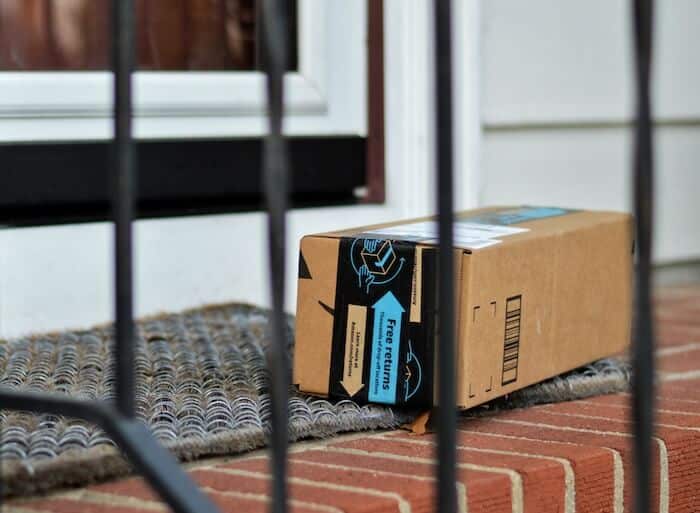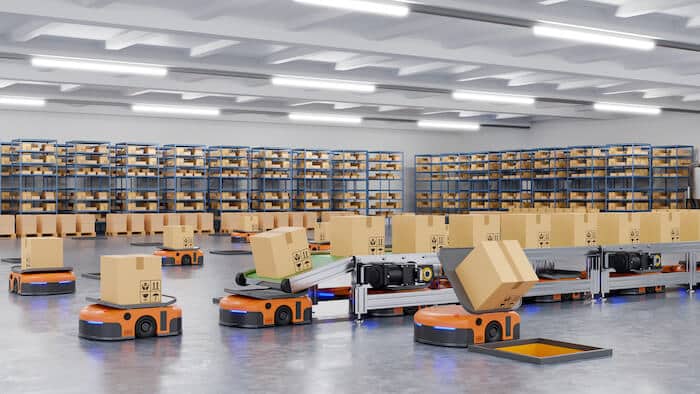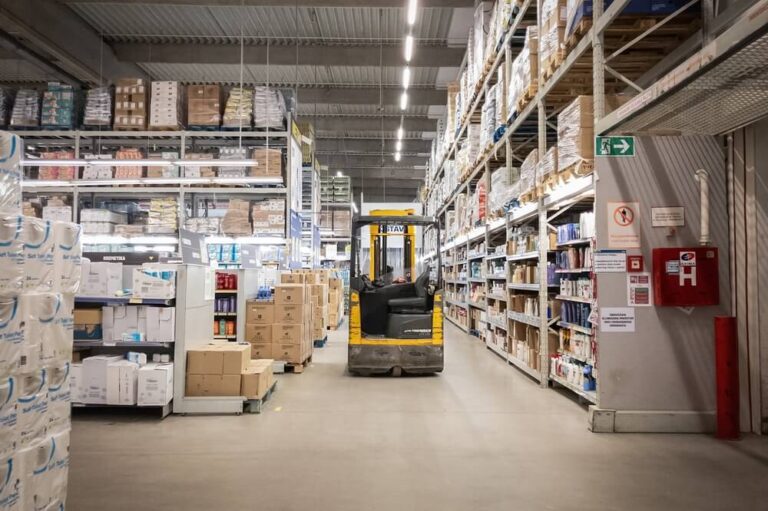In August of 2021, Amazon became the largest retailer outside of China, generating $610 billion over the previous 12 months, while Walmart took in $566 billion. The switch by consumers to more online shopping during the COVID-19 pandemic ended Walmart’s 30-year reign as the top retailer. So, if you want to sell your own product to consumers, you need to have a strong Amazon game. And just as a buyer in brick and mortar stores decides where your product goes on the shelf, your place on the ecommerce virtual shelf of Amazon is determined by where its algorithm places you on its web page.
That is why Amazon listing optimization — setting up your listing to appeal to its ranking algorithm — is critical to success as an Amazon seller, especially for a new product.
Don’t think of this as a challenge. It is an opportunity. With a well-designed product, a few simple rules, and a basic understanding of how Amazon ranks product listings, you can compete with and beat larger and more established competitors. You don’t have to convince a buyer to stock and show off your product. You just need to make Amazon’s search algorithm happy.
This article will go over some basics about Amazon product listings and its search ranking algorithm and then seven simple rules that will drive your ranking higher. We finish with some suggestions on how to get started.
How Amazon Ranks Products

How Amazon Ranks Product Listings
What you need to know is that the algorithm uses three things to rank you:
- Your product listing contents
- Your history on Amazon — things like how many products you offer, what you have sold, how often people click on your product, your customer reviews, and all the information Amazon tracks about you
- Your price
The better each of these components is, the higher you rank. This article focuses on Amazon listing optimization for your products, so we won’t go too deeply into how history and price impact ranking.
Product Listings and Amazon SEO
If you think about how any website search engine works, it focuses on returning information users are looking for by scanning and using the information on a web page to determine if that page is a good match. The Amazon search algorithm uses your product listing to see if what you’re offering is a good match for customer searches.
When you’re selling your own product, you control the product listing. All product listings will have the same components:
- Product title
- Product images
- Variations
- Bullet points
- Buy Box
- Description
- Customer reviews
- Backend keywords (not seen by customers)
To optimize your listing and increase your product discoverability, you have to take some time to provide useful product information in each component. Information that helps the algorithm find you while — and this is the tricky part — providing content to your potential customers that drives them to buy your product. The Amazon algorithm ranks the quality of information higher than quantity. It likes clear pictures, concise text, and specific keywords. Over time, it has tracked users to know what good bullet points or customer reviews look like and score them higher.
Better Product Listings With Amazon’s A+ Content
You can also take things to the next level by using Amazon’s A+ Content feature. This allows you to have enhanced product descriptions and information about your brand. To qualify for enhanced brand content, you have to be a professional seller and go through the Amazon Brand Registry Process. A+ Content allows you to have custom paragraph headers and images, unique layouts, product comparison charts, links to other products you offer, and carousel displays of images.
Better Product Listings Lead to Better Rankings
The A10 algorithm pays close attention to the title, image quality, bullet points, description, and keywords. If you provide content that draws customers to your product, it will score high for ranking. A10 also rewards success with more success. The more times customers click on your product to learn more (the click-through rate or CTR), and the more times they buy (the conversion rate) the higher you will rank in future searches. This reinforces the importance of giving customers the information they’re looking for when developing your Amazon listing optimization strategy.
7 Rules for Amazon Listing Optimization

1. Know Your Keywords and Use Them Well
Like most search tools, the Amazon A10 algorithm looks for specific Amazon keywords that match the search terms customers enter and show up on previous successful searches. Relevant keywords should come from the research you do in the early stages of your product development process. You will learn what customers are looking for, which should translate into a strong keyword game.
Also, do keyword research and take a look at your competition and what words they use in their product listings. The keywords go in your bullet points, description, and the backend keywords you enter. And please remember, the days of keyword packing are gone. You have to use the words and phrases correctly, and excessive repetition is penalized. Make keyword research something you do constantly before and after you launch your product on the Amazon marketplace.
2. Keep It Concise and Informative
Remember that the Amazon algorithm rewards click-throughs and conversions to sales. If your text is concise and provides customers with the information they’re looking for, you’ll likely get more sales and higher product rankings in the future.
Think about what your customers are looking for and how your product delivers on those wants — and also how it is better than the competition. Use just a few bullet points to hit the highlights of your key features, don’t list everything you want them to know. In the product descriptions, use short sentences, and put the most important information about product features at the top.
You are not writing a novel here. You are providing information in a quick but easy-to-follow way. And don’t be afraid to experiment. Change things up every once in a while and see if it helps. Also, look at the wording used in higher-ranking products to see what is working.
3. Invest in Good Product Images
A common mistake for new Amazon sellers is to skimp on images. Pay for a professional product photographer to take high-quality, high-resolution product images from multiple angles. It’s hard to describe a good image, but it is easy to recognize a bad one. You have one image of your product that shows up on the page listing search results and is enlarged next to your listing. Make it vibrant and engaging while conveying the value of your product.
Some suggestions on good product images include the following:
- Use quality images that look professional.
- Use a white background.
- Create photos at least 1,000 pixels wide, but preferably 2560 pixels wide.
- The product should occupy 85% of the frame.
- Use a clear, crisp image that looks good when zoomed in.
- Include at least five images per listing.
- Your main image must show a single view of your product with no text or other items.
- Your images should show off your brand.
- Include other objects if they show scale or how the product is used.
- Include text, backgrounds, and environments if they enhance your messaging.
4. Focus on Getting Good Product Reviews
You can not overstate the importance of customer reviews. Not only do they impact your conversion rate, but they also play a significant role in where you rank in results. Customer reviews lead to more sales because they activate something called social proof — using the actions of others to guide them when they’re not certain about what to do.
The most effective way to get good reviews is to provide a fantastic product along with a great customer experience. This goes back to the fundamentals of good industrial design and outstanding customer service. Do this, and the good reviews will literally write themselves.
You can also be proactive about asking for reviews. When you get started, use the Early Reviewer program. This is a service provided by Amazon for new sellers where they reach out to your buyers to get reviews. Once you have sales going, leverage the “Request a Review” button. This is a manual process that kicks off an email from Amazon to customers you select, asking for a review.
Amazon also offers something called Amazon Vine. This is a service where you send your product to reviewers that Amazon has invited to participate based on the quality of their reviews. You send them your product, and they write a review.
5. Advertise Your Product on Amazon and Elsewhere
Remember, you’re trying to drive people to your product listing. The more people who look at your product listing or buy your product, the better you’ll rate. In the past, the Amazon search algorithm preferred listings that had advertising. This is less true now, but advertising helps by driving people directly to your listing, increasing your score for future searches.
The most effective way to drive people to your listing is to advertise your product through Amazon. This can be as simple as pay-per-click or PPC advertising to as comprehensive as having a brand store. Amazon wants you to advertise, so it provides a wealth of resources to guide you. If you don’t have a large budget, start simple and experiment. Watch the statistics Amazon provides to tell you what is working. If you have a bigger budget, work with a professional who understands the latest trends and how to maximize your investment.
Standard pay-per-click advertising on other platforms is also beneficial to your ranking by driving people to your product from outside of Amazon. Your advertising budget should include some funds for Google Adwords or other online advertising that is industry-specific.
6. It’s All in the Title
The title of your product listing is important for two reasons. First, it’s what customers see in that long list of items they get from their search. If it doesn’t grab them, they won’t read the rest of your listing. Second, Amazon search gives heavy weight to matches in your title to search terms. So you have to write a title that appeals to both your target audience and the search engine.
This is one area where Amazon provides clear guidelines. Follow these, and your title should perform well:
- Be concise, try to use less than 80 characters.
- Don’t use subjective words like best, hot, or popular.
- Use numerals instead of spelling out numbers.
- Never use ALL CAPS.
- Capitalize the main words in your title.
- Include the most important keywords.
- Include variation information like color and size.
Look at how other products rank in your space and the difference between high-ranking listings and low-ranking product listings. You will find that the secret is including lots of information in a concise way.
Start with this template:
[Brand] + [Sub-Brand] + [Model Number] + [Size] + [Product Description] + [Defining Features]
Spend some time on your title. Start long and cut until you only have what is needed. Also, know that title rules change by product category, so look up the guidelines for your product.
7. Make It Easy for Your Customers
People follow the path of least resistance. Amazon has fine-tuned its search tool to get consumers to the products they want to buy. So make it easy for your customers to want your product. Use your product, listing, and customer experience to deliver value to your customers. This then leads to better customer reviews, high click-through rates, and stronger conversion. And, all of those lead to better rankings. The easier you make it for them to understand your value proposition and why your product is better, the more love you will get from the Amazon algorithm.
How to Get Started With Amazon Listing Optimization

You should start planning your Amazon strategy as early as possible, in the research phase of your product development process. Capture what is working and what is not working in your space. Once your product is far enough along, start making marketing images. Also, budget for advertising and start noodling on your messaging.
When you’re ready to get started, leverage the vast resources available to Amazon sellers in its Seller Central site. Then follow its guidelines to post your product, drive traffic, and encourage reviews. Constantly check your statistics and make changes to adapt to what you learn from your listing and others.
A great way to get a headstart with Amazon listing optimization is to find a partner who can help with the whole process, not just the Amazon listing. Gembah offers complete solutions for entrepreneurs looking to bring their ideas to market — research, design, manufacturing, and supply chain management. Start with a great team if you want a killer product that ranks high on Amazon. Reach out today and let us help you on your journey.



